石川県金沢市で育まれた、気品あふれる染め物「加賀友禅」。その魅力は、豪華絢爛な京友禅とは一線を画す、落ち着きのある佇まいと、まるで絵画のように写実的な自然の描写にあります。一見すると地味に見えるかもしれませんが、そこには加賀百万石の武家文化に根差した、力強く奥深い美意識が息づいているのです。なぜ、美しい花々の中に、あえて虫に食われた葉を描き込むのでしょうか。
- 作家主義と証紙が守る信頼: 一人の作家が全工程を手掛ける芸術性と、産地組合が品質を保証する信頼性の両立。
- 加賀五彩の気品: 臙脂、藍、黄土、草、古代紫。華美を抑えた伝統の色が、武家好みの落ち着きと品格を醸し出す。
- 不完全さへのまなざし: 自然をありのままに写し取る「虫食い」の表現に込められた、日本的な美の哲学。
加賀百万石が育んだ「用の美」
加賀友禅のルーツは、今から約500年前の加賀国独自の染色技法「梅染(うめぞめ)」に遡ります。その後、江戸時代中期に、京都で友禅染を大成させた宮崎友禅斎が加賀藩の招きで金沢に滞在し、その先進的な技法を伝えたことで、加賀友禅は飛躍的な発展を遂げました。友禅斎は後に京都へ戻りますが、その技法は金沢の地で独自の進化を遂げ、武家社会の気風を反映した、質実剛健で落ち着いた美しさを持つ染物として確立されたのです。
京友禅が公家文化を背景に、金箔や刺繍を多用して華やかさを競ったのに対し、加賀友禅は加賀藩主・前田家の庇護のもと、武家の「用の美」を追求しました。そのため、刺繍や箔といった染色以外の加飾をほとんど行わず、染めの技術だけで写実的な絵画美を表現するのが最大の特徴となっています。
自然を写し取る独特の技法
加賀友禅の美しさを支えるのは、その独特の技法とデザインです。モチーフとして描かれるのは、主に写実的な草花模様。そして、その構図は外側から内側に向かって色が薄くなる「外ぼかし」という技法で、立体感や奥行きが巧みに表現されます。
色彩の基本となるのは、「加賀五彩(かがごさい)」と呼ばれる臙脂(えんじ)・藍・黄土・草・古代紫の五色。これらの落ち着いた色調が、加賀友禅ならではの気品と深みを生み出しています。
そして、加賀友禅を最も象徴するのが「虫食い」という表現です。これは、草花の葉にあえて虫が食った跡や、変色した部分を描き込む技法。完璧な美しさだけでなく、自然界のありのままの姿を尊び、不完全さの中にも趣を見出すという、日本独自の美意識がここに表れています。
一人の作家が紡ぐ物語と品質の証
京友禅が各工程を専門の職人が分業で手掛ける「オーケストラ」であるならば、加賀友禅は一人の作家が図案から下絵、彩色といった主要な工程のほとんどを手掛ける「ソロコンサート」に例えられます。この「作家主義」により、作品には作家それぞれの個性や世界観が色濃く反映されます。そのため、一枚の着物が、まるで一人の画家が描いた絵画作品のような、強いメッセージ性と芸術性を放つのです。
落款(らっかん)と呼ばれる作家のサインが記されているのも、全工程に責任を持つという作家の気概の表れと言えるでしょう。そして、その品質を産地全体で公式に保証するのが、加賀染振興協会が発行する「証紙」です。伝統的な技法を用いて金沢で手描き染色された本物の加賀友禅にのみ貼り付けられるこの証紙は、作り手の誇りと、消費者が安心して選ぶための信頼の証となっています。
現代に息づく武家の品格
加賀友禅は、その誕生から現代に至るまで、武家文化の精神性を宿した「染めの芸術」として、その地位を確立してきました。現代では、着物はもちろんのこと、その優れたデザイン性や技術を活かしたネクタイやスカーフ、インテリア製品など、新たな分野への挑戦も行われています。一枚の布に込められた作家の魂と、自然を敬う心。加賀友禅の奥深い魅力は、これからも私たちの心を静かに、そして強く捉え続けるに違いありません。

解説ポイント①:作家主義と証紙が守る信頼
加賀友禅の制作体制は「作家主義」という言葉で表現されます。これは、デザインの構想から、下絵、そして彩色の中心部分まで、一人の作家が一貫して責任を持って手掛ける制作スタイルを指します。京友禅が、図案家、糊置き職人、彩色職人といった各分野のスペシャリストによる分業制で成り立っているのとは対照的です。そのため、加賀友禅の作品には、作り手である作家の個性、自然観、美意識がダイレクトに反映されます。
この作家個人の証明である落款に加え、加賀友禅の信頼性をさらに高めているのが「証紙」の存在です。これは、石川県内の染織関連業者で組織される「加賀染振興協会」が発行するもので、厳しい検査基準をクリアした手描き友禅作品にのみ与えられます。証紙には、作家名、品名、図案名などが手書きで明記され、協会の角印が押されます。この証紙があることこそ、それが紛れもなく伝統の技法で制作された本物の加賀友禅であることの公式な証明となり、消費者に安心感を与えているのです。
解説ポイント②:加賀五彩の気品
加賀友禅の基調となる色彩は「加賀五彩」と呼ばれる伝統的な五色です。
- 臙脂(えんじ): 深みのある赤色
- 藍(あい): 落ち着いた青色
- 黄土(おうど): 温かみのある黄色
- 草(くさ): 日本の自然を思わせる緑色
- 古代紫(こだいむらさき): 気品のある紫色
これらの色は、九谷焼の色使いとも共通すると言われ、加賀の伝統的な色彩感覚を反映しています。全体的に彩度を抑えた色調は、派手さを好まない武家の気風から生まれたもの。これらの色を基本としながら、作家は独自の感性で色を重ね、濃淡をつけ、「外ぼかし」(模様の外側を濃く、内側を淡くぼかす技法)を駆使して、写実的で立体感のある絵画的な表現を生み出します。金箔や刺繍を用いない分、この色彩とぼかしの技術が、加賀友禅の品格を決定づける重要な要素となっています。
解説ポイント③:不完全さへのまなざし
加賀友禅の最もユニークな特徴の一つが「虫食い」の表現です。これは、植物の葉に、あえて虫に食われた跡や枯れて変色した部分を描き入れる技法を指します。一見すると、なぜ完璧に美しい葉を描かないのかと不思議に思うかもしれません。しかし、これこそが加賀友禅の根底に流れる美意識の真髄なのです。理想化された美しさだけでなく、傷つき、朽ちていくものも含めた「ありのままの自然の姿」を尊ぶ心。完全ではないものの中にこそ趣や生命の真実を見出す、わびさびに通じる日本的な美学が表現されています。この「虫食い」は、単なる写実表現を超え、自然への深い洞察と敬愛の念を示す、哲学的な意匠と言えるでしょう。
参考文献
- 加賀友禅とは – 加賀友禅公式サイト
- 加賀友禅(かがゆうぜん)の特徴 や歴史 – KOGEI JAPAN
- 加賀友禅と京友禅~武士と貴族の感性の違いが一目瞭然!~ – とらくらメディア
- 加賀友禅とはどんな着物?加賀友禅作家さんに聞いてみました。 – きもの永見
- 加賀友禅の証紙について – 加賀友禅公式サイト
【English Article】
Samurai Aesthetics Blooming on Cloth: Why Does Kaga-Yuzen Depict “Insect-Eaten” Leaves?
Nurtured in Kanazawa City, Ishikawa Prefecture, “Kaga-Yuzen” is a dyed textile overflowing with elegance. Its charm lies in a serene demeanor that sets it apart from the glamorous Kyo-Yuzen, and in its realistic, almost painterly, depiction of nature. While it may seem understated at first glance, it is imbued with a powerful and profound aesthetic consciousness rooted in the samurai culture of the Kaga Domain, known for its “million koku” wealth. Why would one deliberately depict insect-eaten leaves among beautiful flowers?
- Trust Guarded by “Artist-isanship” and a Seal of Authenticity: The duality of artistry from a single creator and the reliability guaranteed by the local industry association.
- The Elegance of the Kaga Gosai: Enji (crimson), Ai (indigo), Odo (ochre), Kusa (grass green), and Kodai Murasaki (ancient purple). These traditional, subdued colors create a sense of calm and dignity favored by the samurai class.
- A Gaze Towards Imperfection: The Japanese philosophy of beauty embodied in the “mushikui” (insect-eaten) expression, which captures nature as it truly is.
The “Functional Beauty” Nurtured by the Kaga Domain
The roots of Kaga-Yuzen can be traced back about 500 years to a unique dyeing technique of the Kaga province called “Umezome.” Later, in the mid-Edo period, Miyazaki Yuzensai, who had perfected Yuzen dyeing in Kyoto, was invited to Kanazawa by the Kaga clan. His advanced techniques spurred the dramatic development of Kaga-Yuzen. Although Yuzensai later returned to Kyoto, his techniques evolved uniquely in Kanazawa, establishing a style of dyeing that reflected the spirit of the samurai society—simple, strong, and serene.
While Kyo-Yuzen, with its background in courtier culture, vied for splendor using ample gold leaf and embroidery, Kaga-Yuzen pursued the “functional beauty” of the samurai class under the patronage of the Maeda clan, the lords of Kaga. As a result, its most defining characteristic is the expression of realistic, painterly beauty through dyeing techniques alone, with almost no use of other embellishments like embroidery or foil.
Unique Techniques to Capture Nature
The beauty of Kaga-Yuzen is supported by its unique techniques and designs. The motifs are primarily realistic depictions of flowers and plants. The composition skillfully creates a sense of three-dimensionality and depth using a technique called “soto-bokashi,” where colors are shaded from dark on the outside to light on the inside.
The basic color palette consists of the five “Kaga Gosai” (Five Kaga Colors): Enji (crimson), Ai (indigo), Odo (ochre), Kusa (grass green), and Kodai Murasaki (ancient purple). These calm tones give Kaga-Yuzen its characteristic elegance and depth.
Perhaps the most symbolic expression of Kaga-Yuzen is “mushikui” (insect-eaten). This is a technique of intentionally depicting traces of insect bites or discolored spots on the leaves of plants. It represents a uniquely Japanese aesthetic that respects not only perfect beauty but also the unadorned state of the natural world, finding charm even in imperfection.
A Story Spun by a Single Artist and a Mark of Quality
If Kyo-Yuzen is an “orchestra” where specialists in each process work in a division of labor, Kaga-Yuzen can be compared to a “solo concert,” where a single artist handles most of the main processes, from design and under-drawing to coloring. This “artist-isanship” approach means that the artist’s individuality and worldview are strongly reflected in the work. As a result, each kimono radiates a strong message and artistic quality, much like a painting created by a single artist.
The presence of a “rakkan,” a seal or signature of the artist, is a testament to their pride and responsibility for the entire creative process. Furthermore, the quality of the entire production area is officially guaranteed by the “shoshi” (certificate label) issued by the Kaga Dyeing Promotion Association. This label, affixed only to authentic Kaga-Yuzen hand-painted and dyed in Kanazawa using traditional techniques, is a mark of the creator’s pride and a symbol of trust for consumers to choose with confidence.
The Enduring Dignity of Samurai Culture
From its birth to the present day, Kaga-Yuzen has established its status as a “dyeing art” that embodies the spirit of samurai culture. Today, while continuing to produce kimonos, it is also taking on new challenges by applying its superior design and techniques to products like neckties, scarves, and interior goods. The artist’s soul and a reverence for nature are woven into each piece of cloth. The profound charm of Kaga-Yuzen will surely continue to quietly, yet powerfully, capture our hearts.
Analysis Point ①: Trust Guarded by “Artist-isanship” and a Seal of Authenticity
The production system of Kaga-Yuzen is characterized by the term “artist-isanship” (sakka-shugi). This refers to a production style where a single artist takes responsibility for the entire creative process, from conceptualizing the design to the under-drawing and the central coloring work. This stands in contrast to Kyo-Yuzen, which is based on a division of labor among specialists such as designers, paste-resisters, and colorists. Because of this, Kaga-Yuzen works directly reflect the personality, view of nature, and aesthetic sense of their creator.
In addition to the “rakkan” (artist’s seal), which serves as the artist’s personal certification, the reliability of Kaga-Yuzen is further enhanced by the existence of the “shoshi” (certificate label). This is issued by the “Kaga Dyeing Promotion Association,” an organization composed of dyeing and weaving businesses in Ishikawa Prefecture, and is granted only to hand-painted Yuzen works that have cleared strict inspection standards. The certificate label details the artist’s name, the product name, and the design name in handwriting, and is stamped with the association’s official seal. The presence of this label is the official proof that the piece is an authentic Kaga-Yuzen created with traditional techniques, providing peace of mind to the consumer.
Analysis Point ②: The Elegance of the Kaga Gosai
The foundational colors of Kaga-Yuzen are a traditional set of five called the “Kaga Gosai” (Five Kaga Colors).
- Enji: A deep crimson red.
- Ai: A calm indigo blue.
- Odo: A warm ochre yellow.
- Kusa: A grass green, reminiscent of Japanese nature.
- Kodai Murasaki: An elegant ancient purple.
These colors, said to have commonalities with those used in Kutani ware porcelain, reflect the traditional color sense of the Kaga region. The overall subdued tones were born from the samurai disposition, which disdained gaudiness. Based on these colors, artists layer and shade them with their own unique sensibility, using the “soto-bokashi” technique (shading from dark on the outside to light on the inside of a design) to create realistic, three-dimensional, and painterly expressions. Since gold leaf and embroidery are not used, these colors and shading techniques are crucial elements that define the dignity of Kaga-Yuzen.
Analysis Point ③: A Gaze Towards Imperfection
One of the most unique features of Kaga-Yuzen is the expression of “mushikui” (insect-eaten). This technique involves deliberately depicting marks left by insects or discolored, withered parts on plant leaves. At first, one might wonder why a perfectly beautiful leaf is not depicted. However, this is the essence of the aesthetic that underlies Kaga-Yuzen. It is a heart that reveres the “unadorned figure of nature,” including things that are damaged and decaying, not just idealized beauty. It expresses a Japanese aesthetic, akin to wabi-sabi, that finds taste and the truth of life in things that are not perfect. This “mushikui” is more than just a realistic depiction; it is a philosophical design that shows deep insight into and reverence for nature.
References
- Kaga Yuzen to wa – Kaga Yuzen Official Website (Japanese)
- Kaga Yuzen (Kagayuzen) no Tokuchō ya Rekishi – KOGEI JAPAN (Japanese)
- Kaga Yuzen to Kyo Yuzen ~Bushi to Kizoku no Kansei no Chigai ga Hit目でRyōzen!~ – Torakura Media (Japanese)
- Kaga Yuzen to wa donna Kimono? Kaga Yuzen Sakka-san ni Kiite Mimashita. – Kimono Nagami (Japanese)
- Kaga Yuzen no Shoshi ni tsuite – Kaga Yuzen Official Website (Japanese)

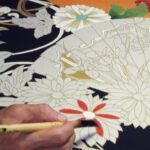
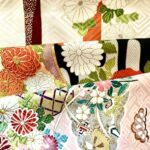
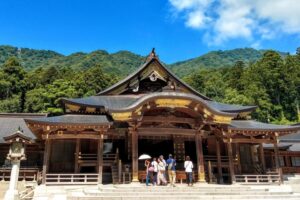
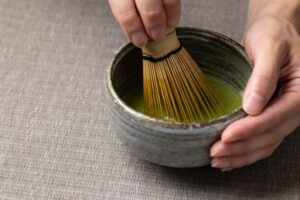

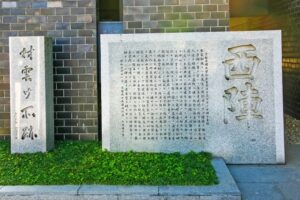

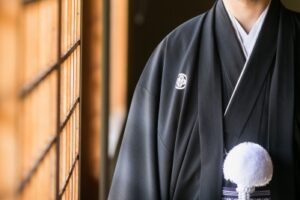
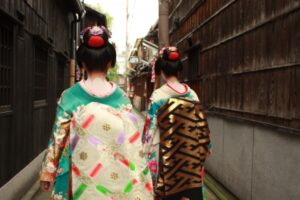
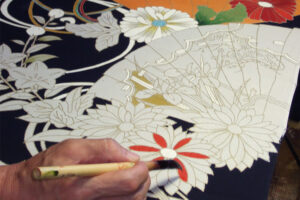
コメントを残す